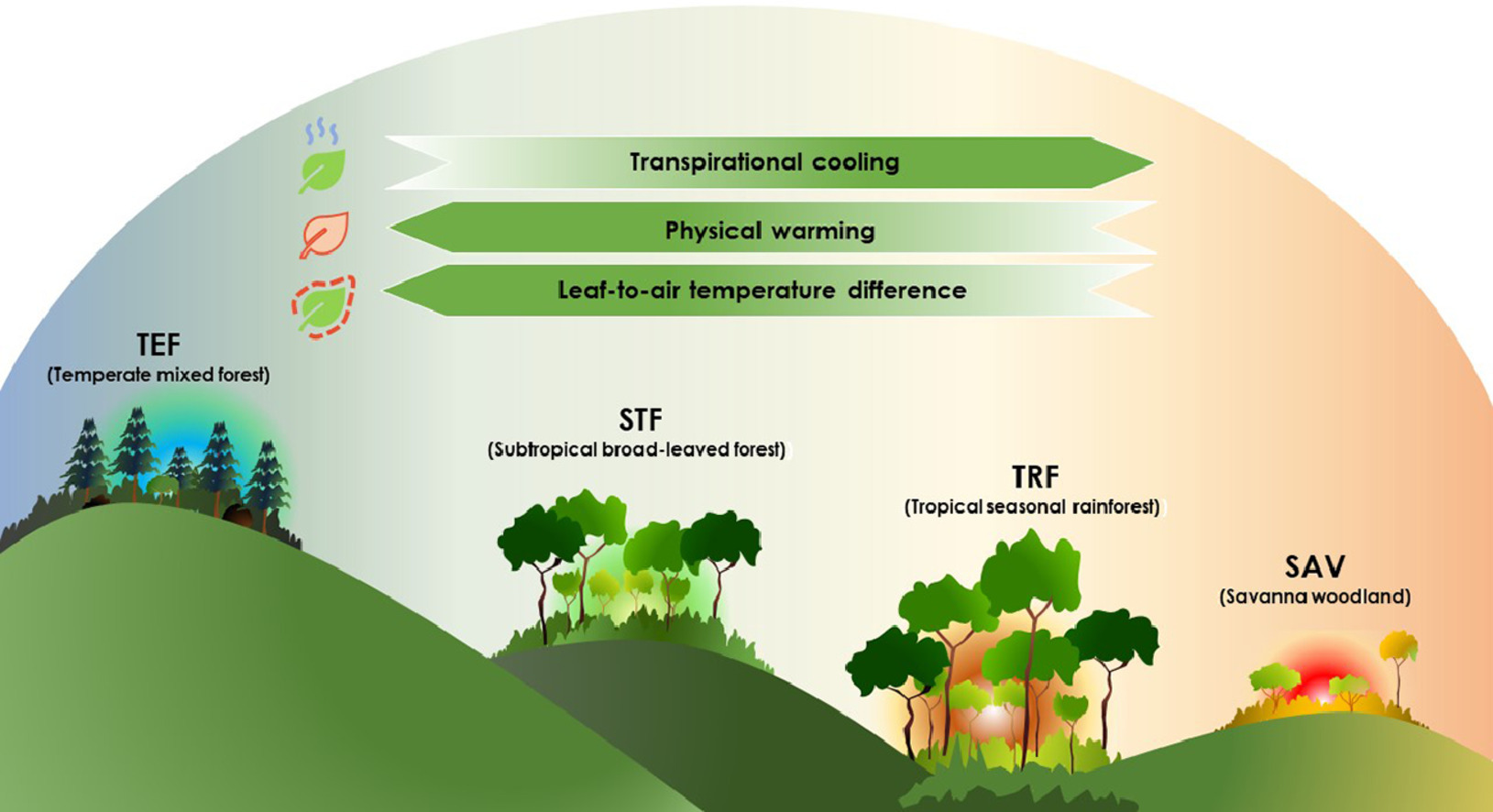
Leaf temperature is the direct micro-environment that controls plant ecophysiological processes. Thermal regulation, thermal tolerance, and thermal avoidance together constitute the thermal adaptation strategies of plants. However, the mechanisms underlying leaf thermal regulation strategies across different environmental gradients have not been fully explored.
Previous studies have used a method called "3-T method" (comparing the temperature of a control leaf, the temperature of a non-transpiring leaf, and the air temperature) to quantitatively discriminate in situ thermal effects of transpiration and leaf physical traits.
In a recent study published in Agricultural and Forest Meteorology, researchers from the Xishuangbanna Tropical Botanical Garden (XTBG) of the Chinese Academy of Sciences and University of Plymouth used 3-T method to study thermal regulation strategies of leaves along a temperature and precipitation gradient.
The researchers selected four vegetation types from the south to the north of Yunnan Province, China, including a savanna woodland (SAV), a tropical rain forest (TRF), a subtropical evergreen broad-leaved forest (STF), and a temperate mixed forest (TEF). They studied the thermal regulation strategies of upper canopy species in the four vegetation types.
They found that the leaf-air temperature difference decreased with increasing environmental temperature. Plants in the hot environment mainly relied on transpirational cooling to avoid high leaf temperatures. Transpirational cooling was strongest in savanna woodland, and decreased from the hottest site to the coldest site.
In addition, plants under extreme thermal environments can use all means to optimize performance and survive. Plants minimized transpirational cooling, which facilitated leaf warming in cold forest. There was no trade-off between thermal regulation, thermal tolerance and thermal avoidance. Leaf area and water content played important roles in physical thermal regulation.
The researchers suggested that plants presented have limited homeothermy at the biome scale, as cooling effects were stronger in hotter environments and warming effects were stronger in colder environments.
"The present research revealed a relatively comprehensive scenario of leaf regulation strategies under four distinct environments, thereby enhancing our understanding of how plants adapt to thermal environments," said LIN Hua of XTBG.

Leaf thermal regulation strategies of canopy species across four vegetation types along a temperature and precipitation gradient. (Image by ZHOU Yingying)

86-10-68597521 (day)
86-10-68597289 (night)

52 Sanlihe Rd., Xicheng District,
Beijing, China (100864)

